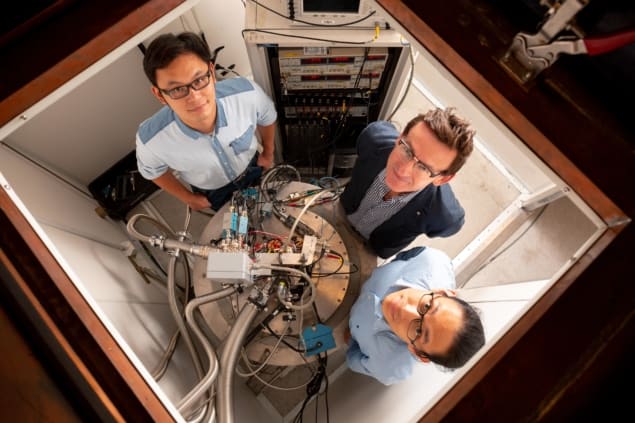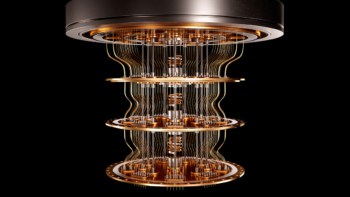
A two-qubit gate based on silicon quantum dots has achieved a quantum fidelity of 98%. The device was created by researchers at the University of New South Wales in Australia and the fidelity measurement is the first made on a silicon two-qubit gate.
Two-qubit gates are essential for creating practical quantum computers and the team’s leader, Andrew Dzurak, says the group is now working on a silicon-based “quantum chip that could be used for real-world applications”.
Thanks to decades of intense R&D by the computer industry, silicon is the material of choice when it comes to building and integrating electronic devices. Silicon could therefore play an important role in the future development of practical quantum computers – which, in principle, could outperform conventional computers doing some types of calculations.
Quantum computers comprise quantum bits (or qubits) that are linked-up to perform calculations. Researchers are currently trying to work out which technologies – such as trapped ions, superconducting circuits and semiconductor quantum dots – make the best qubits. An important parameter is how resistant a qubit is to disruption (or decoherence) by external noise, which can very quickly destroy quantum information.
High fidelity
Resistance to decoherence can be assessed in term of the fidelity of a quantum operation – which is a measure of how close the real-world outcome of the process is to the ideal outcome. While the fidelity does not have to be a perfect 100%, anything lower will eventually lead to errors creeping into calculations after multiple operations are performed. Quantum error-correction protocols can mitigate decoherence, but this comes at a great cost and any practical system must have a very high fidelity to begin with.
Dzurak and colleagues specialize in creating qubits that encode and process quantum information using the spin states of silicon quantum dots. Earlier this year they made a one-qubit quantum gate with record-breaking fidelity of 99.96%.
Now Dzurak’s team has created a two-qubit gate from two silicon quantum dots and demonstrated that it can achieve a fidelity of 98% when performing the controlled-rotation (CROT) operation. CROT can be used to create a controlled-NOT (CNOT) gate, which is an essential component of a quantum computer. Clifford-based fidelity benchmarking was used to evaluate the system, which is a technique for assessing and comparing the performance of qubit systems made from a range of different technologies.
More than 50 gate operations
Team member Wister Huang explains, “We achieved such a high fidelity by characterizing and mitigating primary error sources, thus improving gate fidelities to the point where randomized benchmarking sequences of significant length — more than 50 gate operations — could be performed on our two-qubit device”.

Silicon device reads and writes quantum information
The team believes that their work provides further evidence that silicon is a strong contender for building large-scale, practical quantum computers. Indeed, Dzurak says “We think that we’ll achieve significantly higher fidelities in the near future, opening the path to full- scale, fault-tolerant quantum computation. We’re now on the verge of a two-qubit accuracy that’s high enough for quantum error correction.”
The research is described in Nature.



